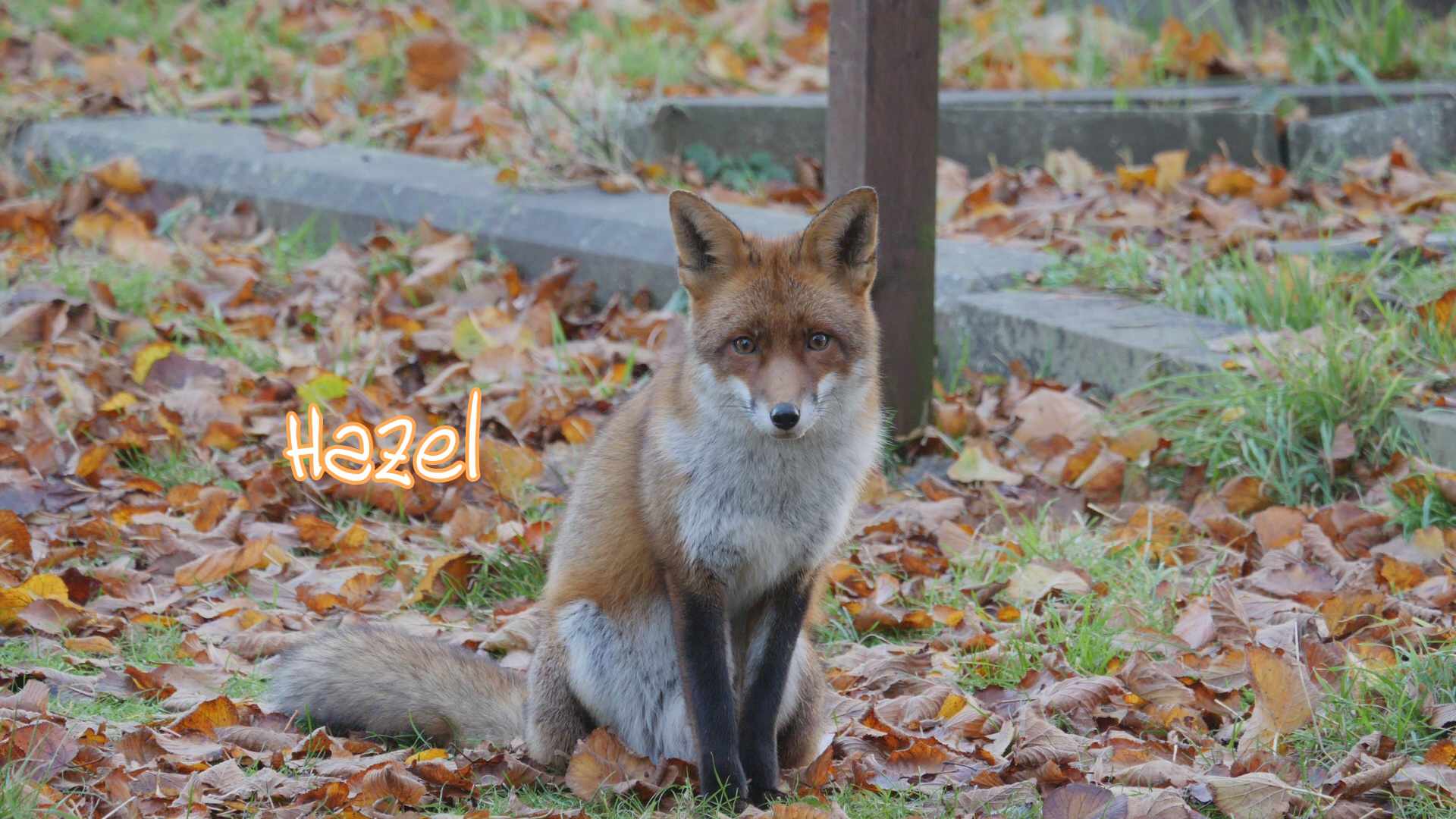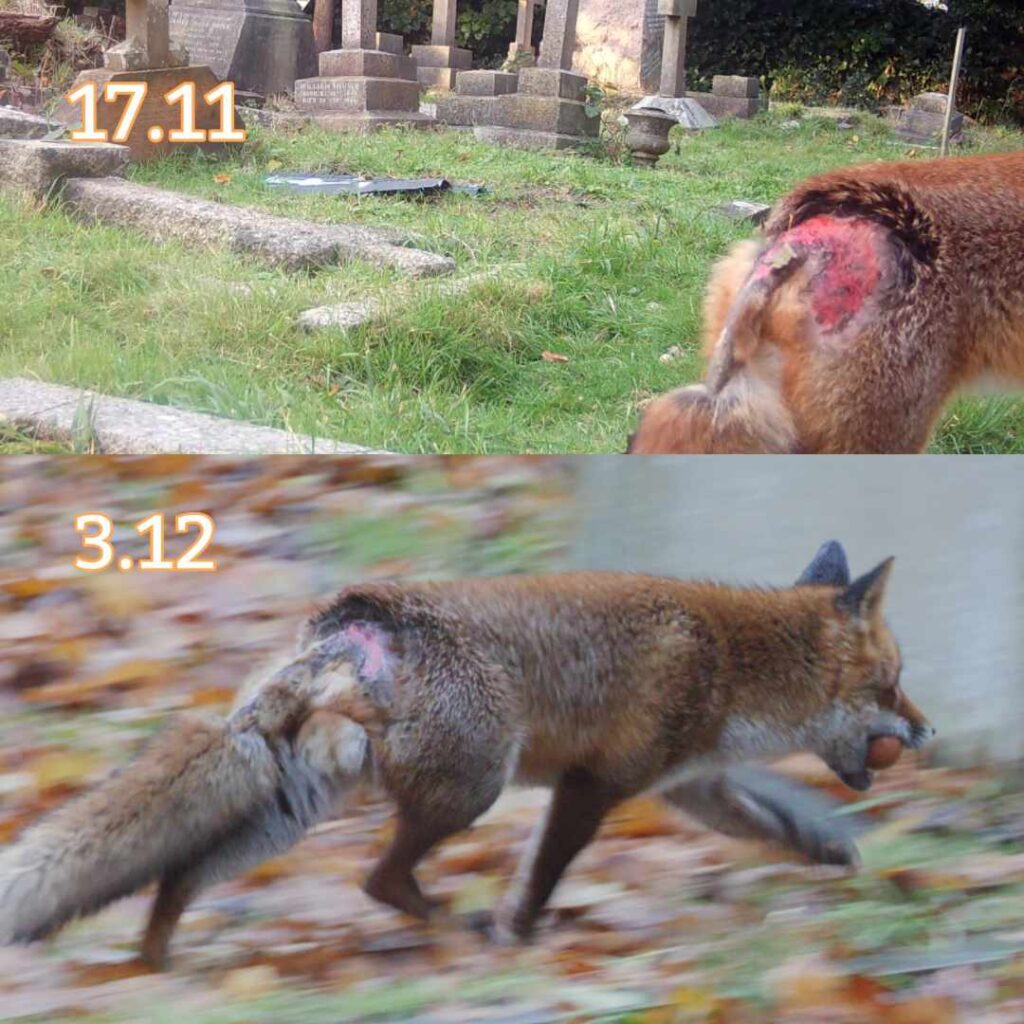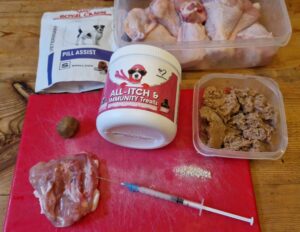
“Out of difficulties grow miracles.” (Jean De La Bruyere)
The last few weeks have been very testing for me. I treated Hazel, one of the juveniles at the cemetery for mange but rather than recovering swiftly, he started chewing his lower back raw. This was very worrying as sepsis was a real danger and obviously, he was in discomfort. As always, I shared the trail camera footage with multiple fellow rescuers and a vet. It was assumed that Hazel may have had an allergic reaction to the mites and even though the mange meds killed the mites and their eggs, he was stuck in an itch-scratch/chew cycle. This is very hard to break and usually the only thing that helps is a steroid injection as well as a cone around the neck if the fox can be rescued.

But that is the problem: It is impossible to trap Hazel as he is always out with his siblings and it would be hit and miss which fox may go into the trap. Hazel can also neither be netted or scruffed, as he is active and alert and would bolt when approached. So, I was given anti-inflammatory treatment and a natural anti-itch skin supplement. The challenge is to treat Hazel safely, as he is competing with his siblings, as well as many magpies and crows for food. So, I have spent the last 3 weeks every day around 2 hours on fox watch at the cemetery. I give the more dominant foxes drumsticks and eggs to distract them. They take this food, run off into the shrubs to eat and then when submissive Hazel comes out, I give him a chunk of chicken breast that I had injected with the meds as well as the natural remedy chew, wrapped inside a pill pillow and chicken skin. These two bite sized pieces are quickly devoured by Hazel, before his siblings may nick them off him.

In between treating and feeding, I study his injury through binoculars and shoot stills with a long lens, so I can document his condition Even though Hazel has made progress and a large area of the wound has sealed up, a “hotspot” remains that just won’t close up. Luckily the wound is not infected and overall Hazel is in good condition. I am persevering and am hoping for a ‘miracle’ that his wound will finally heal completely even without the steroids he seemingly needs but could not be given safely in the wild. I find it had to accept that indeed I am doing all I can for Hazel and he will either recover or deteriorate (in which case we may be able to rescue him and take him to the vet).

Another concern I have is that I am not serving the fox clan well as firstly my daily visits on site draw a lot of unwelcome attention to the foxes from the local residents and secondly my daily feeding routine made them a little reliant on me just at a time when the juveniles should become more independent and disperse. But there is no way around this – in order to treat Hazel, I have to feed all the foxes that live on site because he is hardly ever just out by himself. Wildlife rescue work especially when done in the wild is always complicated and there are many aspects to take into consideration. I find the key is to decision-making is to come from the perspective of the vulnerable animal(s) rather than the human perspective on how we would quickly like to fix a problem. It is complicated as every situation is different and there is no blueprint on how to act. We have to be compassionate without being sentimental and also be committed to being in it for the long run and open to try new approaches.

My work for the vulnerable foxes is lonely and often emotionally very challenging. It cheered me up so much to find a note from a caring local person on my doorstep that read “Saying prayers for you and Hazel. You are Alpha mamma fox vixen”.

I really do appreciate receiving messages of support. Please send positive vibes to Hazel! Foxes taught me that miracles CAN and DO happen. Dora X

Thank you for doing all you can. Hazel is lucky to have you looking out for him